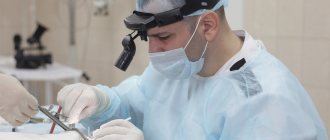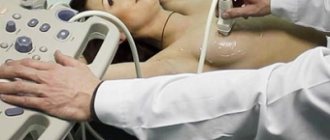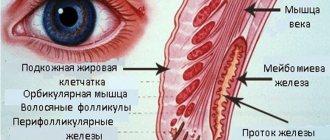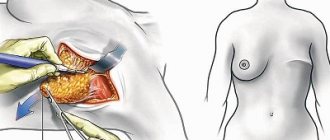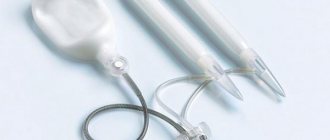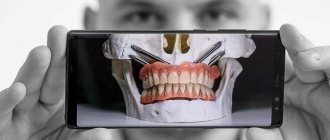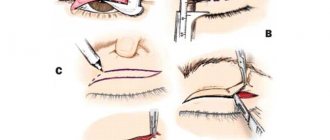Currently, there is a real boom in delicious, toned and convex buttocks, and having a flat butt is completely unfashionable. And, to be honest, it’s not very attractive either. But not everyone can pump up their buttocks in the gym, so they choose another path - this is gluteoplasty of the buttocks: increasing the volume of the buttocks surgically. In the article we will look at the features of gluteoplasty, find out who this operation is indicated for, what types of surgery there are, whether complications and side effects are possible.
Indications for use
Typically, buttock surgery is required in cases where attempts to build up the gluteal muscles with the help of special exercises and nutrition do not bring results. The most common indications for plastic surgery:
- Sagging of soft tissues as a result of age-related changes;
- Decreased volume due to weight loss;
- Muscular atrophy;
- Mechanical injuries;
- Insufficient volume of gluteal tissue;
- Asymmetry;
- Underdevelopment of muscles;
- The desire to correct the form.
Indications and contraindications for gluteoplasty
The goals of gluteoplasty can be considered not only to change the size or configuration of the gluteal region, but also to have a rejuvenating effect, create the correct body proportions, and also prevent the appearance of age-related manifestations. Indications for gluteoplasty are:
- Small, narrow buttocks, masculine body type in women;
- Low located relative to the longitudinal axis of the buttocks;
- Congenital anomalies of muscle development;
- Ptosis of the soft tissues of the gluteal areas after severe weight loss, as a result of age-related changes in the skin and muscles;
- Asymmetry, retractions, deformations and defects after injuries or surgical interventions;
- Disproportionately large buttock areas that do not correspond to the measurements of the waist, chest and hips;
4 shapes of buttocks
Even the patient’s simple desire to change the shape of the buttocks due to purely personal dissatisfaction with their appearance can be considered an indication, because the concept of beauty and personal preferences are different for everyone. If there are no health obstacles, then the surgeon will try to bring the idea of the ideal to life through gluteoplasty when there are no obvious shortcomings in this area.
Thus, the usual reason for gluteoplasty is an aesthetic defect, which is a consequence of:
- Individual anatomical and constitutional characteristics;
- Age factor;
- Body changes after losing weight.
Constitution and body type are those characteristics of the body that are extremely difficult to “fight”, and even exhausting diets and constant training may not give any tangible results. For such patients, surgery is seen as the only way to eliminate deficiencies.
Aging is another factor that a person cannot change. Age-related changes affect the entire body and internal organs, are reflected on the face and, of course, the buttocks, which droop, sag, become deformed, and take on ugly shapes.
People who constantly struggle with excess weight may face the consequences of its fluctuations, because extra centimeters of fat stretch the skin, and after weight loss, sagging of “excess” skin, a decrease in its elasticity and the appearance of unpleasant deformations are inevitable.
By the way, men are increasingly resorting to gluteoplasty. According to statistics from American plastic surgeons, there are already more than 6% of the strong half of humanity among their patients who want to have their buttocks corrected. Considering that men are not very inclined to turn to surgeons for appearance correction, the percentage can be considered quite high.
Since the intervention is performed under general or spinal anesthesia, there is a whole list of contraindications for it:
- Pregnancy and breastfeeding;
- Acute infections, focal pustular and eczematous processes in the intervention area;
- Decompensated diseases of the heart, blood vessels, respiratory organs;
- Severe disorders of the liver and kidneys;
- Hemocoagulation disorders with a tendency to bleeding;
- Mental illness, when the patient cannot make decisions independently, communicate with the surgeon, or his judgments regarding appearance are biased;
- Oncopathology;
- High degree of obesity;
- Diabetes mellitus and some endocrine metabolic syndromes;
- Obliterating endarteritis with impaired arterial blood flow in the legs;
- Diseases of the leg veins - varicose veins, phlebitis, thrombosis.
In addition, the operation is not performed on persons under the age of majority, and after 18 years of age, the patient must give his written informed consent to the intervention, being informed of all the risks and possible consequences.
Contraindications
Gluteoplasty is not performed with the following restrictions:
- Age up to 21 years;
- Obesity;
- Hormonal imbalance;
- Diseases of the heart and blood vessels;
- Diabetes;
- Menstruation and 7 days before and after it;
- Reduced blood clotting;
- Inflammation in the operated area;
- Infections and viruses in the acute stage;
- Benign and malignant formations;
- Skin grafts on the buttocks;
- Dermatological diseases in the treatment area;
- Kidney failure.
Contraindications to buttock surgery
- Serious diseases of the liver, heart, respiratory system, kidneys.
- Endocrine diseases, complex form of diabetes mellitus.
- Malignant tumor.
- Infection.
- Serious allergies.
- Pregnancy.
- Impaired blood clotting.
- Period of menstruation.
- Obesity, which is caused by endocrine disorders.
- Furunculosis, pyoderma of the buttocks.
Thus, gluteoplasty makes it possible to improve the appearance of the buttocks and achieve amazing results. Remember that the operation is quite serious, so it is best to contact a specialist you can trust. If you do not have significant problems with the appearance of your buttocks, you should not take risks and agree to surgery. You must understand that every surgical procedure carries certain risks.
Types of plastic surgery
Depending on the location of the implant, there are three types of plastic surgery:
- with installation of a prosthesis under the gluteus maximus muscle - the optimal solution for placing round implants, the volume of which does not exceed 200 ml;
- with installation of an endoprosthesis under the muscular fascia - the operation of choice for significant atrophy of the gluteal muscles;
- with the implant located between the gluteus maximus and gluteus medius muscles - a technically complex but reliable type of surgical intervention, which is performed only by the most trained surgeons.
Somewhat less often, plastic surgery is performed without installing prostheses with excision of excess skin and/or removal of excess subcutaneous fat.
Criteria for choosing the type of gluteoplasty
At the initial visit to the plastic surgeon, the condition of the buttocks is assessed and compared with the desired result. The doctor pays attention to the following aspects:
- Condition of the skin of the buttocks - if there is too much skin and it sagging, then removal will be necessary.
- The need to change volumes - at the request of the customer, implants are made, which are first applied to the buttocks, and then implanted.
- The age of the patient - the younger the body, the greater the chance of a complete and rapid recovery. For older people, there are some contraindications associated with the presence of chronic diseases and dangerous conditions of the body that can provoke the development of complications.
Example of gluteoplasty
The doctor gives recommendations regarding which method of gluteoplasty is suitable for the patient and how justified it is in a particular situation. If there are contraindications, the doctor is obliged to explain the seriousness of the situation and inform about the possible consequences.
You have about a month to think about it. During this time, the patient must consciously weigh all the pros and cons, and then make the appropriate decision.
Types of implants
For plastic surgery, hypoallergenic, safe materials with highly adhesive silicone content are used. The filler provides natural softness and a “memory effect”, as a result of which the shape is restored after physical impact. The products differ from breast prostheses only in their thick shell, which eliminates the possibility of damage. There are no external differences.
Elastomers vary in shape and size. Round implants are implanted into round-shaped buttocks; with them, the contours can become unnatural. Anatomical oval models are used to increase volume while maintaining naturalness, and teardrop-shaped models are used to correct the deformation of pear-shaped butts. The filler volume varies from 140 to 480 ml.
The surgeon, based on the individual characteristics of the woman’s figure, selects the appropriate implants. Here it is important to make the right choice, because with an overly voluminous prosthesis, the butt will turn out to be in the form of lumps and will bulge strongly in any position of the body.
Popular manufacturers of buttock implants are Eurosilicone and Silimed; they provide a lifetime guarantee on their products. Due to its high strength, there is no need to replace it. When ruptured, the silicone does not leak out and the shape does not change.
Features of buttock implants
In terms of their composition, structure, and shape, buttock implants are practically no different from those inserted into the breast. However, they are larger than breast size. The implant is a dense shell filled with viscous silicone gel. The volume of one implant is 140-180 ml. Note that even if a rupture occurs, the contents of the capsule will not leak into adjacent tissues: this ensures safety when using implants.
The main difference from breast implants is the higher strength of the shell. It is clear that the buttocks must withstand greater loads compared to the chest. Properly placed, high-quality buttock implants cannot be distinguished with the naked eye from your own buttocks: they fit absolutely harmoniously and naturally into the image, appearance, and physique features of a person.
Implants designed to correct the buttocks can be of several types:
- round;
- oval;
- teardrop-shaped.
Read more about each option below.
Round ones are needed to give the buttocks an appetizing shape and volume. Note, however, that this form of implants excludes the possibility of maneuvers: these endoprotectors are static, and during human movement their shapes do not change or adjust. In addition, sometimes incorrectly chosen round implants lead to the creation of a disproportionate figure with an overly protruding and massive fifth point.
Oval ones are installed for the same purpose as round ones, however, they do not have the disadvantages of the latter. More preferable option.
Drop-shaped endoprotectors are used when there is a need to restore the shape of the buttocks after injury or damage.
Most popular: What is autohemotherapy - description of the procedure
Preparatory activities
The first step to increasing the volume of the butt is a consultation with a surgeon, where the doctor collects an anamnesis and makes a preliminary selection of endoprostheses.
In order to eliminate contraindications and obtain permission for surgery, you need to undergo a number of studies:
- Donate blood for general analysis and biochemistry;
- Make a coagulogram;
- Fluorography;
- Electrocardiogram;
- Get checked for hidden infections.
The preparatory stage is standard, as before other surgical interventions:
- Within 14 days, the consumption of alcoholic beverages is stopped and smoking is limited. Bad habits aggravate the recovery period;
- For 10 days, taking medications and contraceptives is excluded. For example, aspirin, which affects blood thickness. If this rule is ignored, if the patient has not informed the doctor, the state of health worsens at the time of the operation, as well as after it;
- Sports training stops within a week;
- You are not allowed to eat fatty, spicy, fried foods during the day; a light snack is acceptable 8 hours before;
- You should take a sedative the day before.
Preparation for the procedure
In order to reduce the likelihood of developing adverse reactions on the part of the patient’s body, it is necessary to prepare in advance:
- Undergo a comprehensive examination that reflects the patient’s health status and also excludes possible contraindications. A blood and urine test will be required, as well as an ECG, fluorography, and a blood test for infections.
- Discuss the size of the implants with your doctor and take preliminary measurements, which depend on the desired results.
- Discuss the quantity and name of medications that will be used during the operation and during the rehabilitation period. Particular attention is paid to anesthesia. The anesthesiologist interviews the patient regarding drug intolerance, guiding the choice of pain relief. Anesthesia can be used in two types: general, when the body is completely immersed in an unconscious state, and epidural, in which the anesthetic is injected into the intervertebral space, while the person himself remains conscious.
Before gluteoplasty, you must undergo an ECG.
Approximately 2 weeks before the appointed date, you need to adjust your diet, paying special attention to the consumption of fatty and fried foods, as well as sweet carbonated drinks. Alcohol should be avoided completely.
In the event that the patient is taking any blood thinning medications, it is necessary to stop taking them for a week. This is necessary in order to minimize the risk of bleeding during surgery.
How is the operation performed?
Buttock enlargement surgery is performed under spinal or general anesthesia (less commonly, using endotracheal anesthesia) for 1.5 - 2 hours.
The main stages of plastic surgery are as follows:
- In the sacral region, along the natural fold, a vertical upper incision is made (Pascal's cut for trochanteric sagging) or a lower (median) incision (butterfly cut for severely drooping buttocks) of about 3-5 cm;
- A pocket is created to place implants in an area where there are fewer large vessels;
- Silicone inserts are distributed;
- Internal and cosmetic stitches are applied.
The difficulty of the procedure lies in bypassing the nerves, otherwise their damage leads to complications.
The formation of the prosthetic bed is carried out in three positions to choose from:
- Under the big muscle. Due to its thickness, the difficulty of performing the operation increases. With this technology, implants up to 200 ml are placed;
- Under the fascia (between the muscles). The technique is used for injuries or atrophy;
- Inside the muscle. The recovery process takes less time.
Subcutaneous installation is not recommended at all, because the butt looks unnatural and the risk of capsular fibrosis increases.
Rehabilitation period
Gluteoplasty involves a longer recovery than after mammoplasty, because the butt is a moving part of the body. You can start working duties in a month.
The hospital stay lasts about 2-3 days. The patient is then sent home. You need to be prepared for the fact that moving around is not easy and will be difficult without outside help.
The pain syndrome is relieved with painkillers. The woman feels discomfort with any movement. Swelling, numbness, increased temperature and decreased sensitivity are observed for about 5-7 days. The sutures are removed no earlier than after half a month; before this, the wound must be treated with hydrogen peroxide.
Features of recovery after buttock augmentation surgery include:
- For the first 7 days, it is forbidden to walk or sit, as injured tissues remind of themselves with sharp pain;
- At the beginning of the second week, you are allowed to walk a little;
- You need to sleep on your stomach or side for two months so as not to change the new shape of your buttocks;
- In order not to provoke inflammation, exposure to the sun is limited. In addition, you cannot visit the sauna, solarium, or take a bath for the same reasons;
- It is mandatory to wear compression clothing for two months. For example, panties or shorts. The doctor independently selects the size, because... the patient may make a mistake with her choice - the underwear will put too much pressure on the operated area or will not fix it enough. It helps reduce swelling and keeps tissues in a stationary state. This stage is very important and if you give up workwear early, the result will worsen. For 30 days, panties are worn around the clock and removed only in the shower; the next month you can remove them while sleeping;
- Physical activity is permissible no earlier than after 6 weeks. Activity should be increased gradually. Fitness classes are allowed after 3-5 months;
- Showering and any hygiene procedures are prohibited during the period until the stitches are removed.
The most important limitation in the future is to perform intramuscular injections only in the thigh or shoulder, so as not to damage the implants.
Features and progress of the operation
The day before the operation, you must stop eating, which will facilitate the process of recovering from anesthesia. The patient is dressed in special sterile clothing, after which he is transported on a gurney to the operating room. Next, he is placed on his stomach, after which anesthesia is administered and connected to sensors for monitoring his general condition.
After a certain time, when the anesthesiologist confirms the patient’s readiness, the entire procedure is performed according to the following scheme:
- Treating the work area with antiseptics - use chlorhexidine or an alcohol solution.
- A small incision is made in the crease between the buttocks to remove any bleeding.
- An implant is inserted into the muscle space, the cost-effectiveness of its placement and the overall shape of the buttocks are assessed.
- Once the installation of the implants is complete, sutures are placed on the skin. If they are self-absorbing, they do not require additional removal. Conventional surgical suture material is removed 5-7 days after surgery.
It is important to understand that over a period of time, when the body undergoes some changes, implants can lose their properties due to a decrease in the elasticity and strength of the skin. This dictates the need for periodic visits to a plastic surgeon, as well as replacement of implants after a certain time.
Possible complications
The following complications may arise after surgery:
- Increased pain threshold;
- Displacement of the prosthesis. Pain is felt in the tissues when walking. The main reason is the low location;
- Seroma and hematoma. Requires installation of a drainage system for several weeks to remove fluid. In case of incomplete removal, puncture is necessary;
- Contouring along the edges as a result of the insert slipping out of the formed pocket;
- Feeling the silicone during palpation;
- Wound suppuration;
- Seams coming apart;
- Development of hypertrophic or keloid scars;
- Capsular contracture. Implants harden when placed close to the skin.
The risk of side effects is minimal, but it does occur.
Specific difficulties after gluteoplasty:
- Decreased sensitivity, which recovers after 6-12 months;
- Asymmetry of the buttocks;
- Change in gait as a result of pressure on the sciatic nerve;
- Numbness, burning, freezing of the gluteal muscles. Characterized by excision of nerve fibers.
Alternative to plastic surgery
Minimally invasive correction options include:
- Brazilian thread lift (filament lifting);
- Injection with your own fat (lipofilling).
Filamentlitting allows you to lift sagging buttocks upward. The result is a rounded butt.
Types of threads
The surgeon selects certain materials based on the indications for:
- Mesothreads. They do not correct already developed ptosis, but only prevent it. Since they do not have any hooks, the necessary tension is not provided and lifting does not work. Threads are used by ladies who are satisfied with their figure and want to maintain it for as long as possible. As it dissolves, it stimulates the production of collagen fibers responsible for skin elasticity;
- Polymilk. During breakdown, lactic acid is formed, which causes elastin to be synthesized. The material has notches that help fix soft tissues in a certain position. The effect lasts about 9-12 months;
- Non-absorbable. Thanks to the large grooves, the threads penetrate deeply inside and stretch the fabric. The result lasts about 5 years.
Carrying out the procedure
The lift begins with the administration of local anesthesia and marking. After the treatment area is disinfected, the doctor makes small punctures (about 1.5 cm) and, using cannulas, inserts threads between the dermis and muscle. Each buttock has 6 to 10 strings. They are then stretched and the excess is trimmed off.
The process is completed by applying cold to prevent swelling and blue discoloration. All manipulations are carried out within an hour. For the first three weeks, you should not sit on anything hard, bend over, make sudden movements, or massage your buttocks. If the pain gets worse, you can take painkillers.
Lipolifting involves using your own fat to replenish the lost volume of the buttocks. An analysis of figure proportions is added to the standard package of examinations.
The procedure is performed under general anesthesia for 2 hours according to the plan:
- Treatment of the edited area with antimicrobial antiseptics;
- Pumping out fatty tissue (mainly from the waist or hips). It is important to maintain sterility so that the cells do not die. Typically, 400 to 900 ml are used and some of this is discarded;
- Centrifuge cleaning;
- Injection of prepared autofat subcutaneously with special thin syringes;
- Applying plasters and bandages.
This method of buttock enlargement entails such difficulties as:
- Swelling that subsides after 1-2 weeks;
- Asymmetry. Occurs in 60% of cases due to greater introduction of material;
- Formation of depressions and folds on the surface of the skin;
- Soreness during the first days.
Repeated surgery is necessary after 2-3 years, when the butt acquires its original shape.
Rehabilitation after gluteoplasty
After the operation, you are discharged only on the third day if everything goes well and without complications. At first, you may feel pain, which only goes away after a few days, sometimes your body temperature rises sharply, and sensitivity may temporarily decrease. But over time, all symptoms go away.
Attention! Sitting on the buttocks is prohibited for 7 days. At this time, it is necessary to wear special compression underwear - shorts, breeches. It is best to wear underwear for at least two months. But the sutures are removed only 10 days after the operation.
You can’t play sports for about a week, otherwise there may be serious complications. The main prohibition after the operation is the inadmissibility of injections. If you decide to have buttock prostheses, injections are only allowed in the thighs for the rest of your life.
What rules should be followed after surgery to make scars heal faster?
- After surgery, do not shower for 3 days.
- For about a week you are only allowed to lie down.
- You cannot bathe in the bathtub for two months after surgery.
- After plastic surgery, you cannot visit the sauna or solarium for a month.
- It is not recommended to play sports for about a month.
- You need to wear special underwear for three months.
- Don't drink alcohol, don't smoke.
- To ensure that the implants take the correct shape, try to sit as little as possible in the first months.
- To heal postoperative scars as quickly as possible, apply ointments, creams, and if pain occurs, take analgesics.
Can there be complications after plastic surgery on the buttocks?
If measures are not taken in a timely manner, everything can end in wound suppuration, bleeding, and severe scarring. Sometimes a serious hematoma appears. To prevent troubles, it is necessary to undergo timely drainage, during which excess fluid is drained after suturing the tissue.
Advantages and disadvantages of the operation
By comparing different methods, you can weigh the pros and cons:
| View | pros | Minuses |
| Thread lift |
|
|
| Endoprosthetics |
|
|
| Lipofilling |
|
|
The average prices in the capital are as follows:
- Buttock augmentation with implants – from 220 thousand rubles. including endoprostheses
- Lipofilling – from 90 thousand rubles. depending on the volume of your own fat
- Lifting with biothreads from 120 thousand rubles.
Read more detailed information on gluteoplasty in a special section of our forum
Types of procedure
Various types of gluteoplasty, which expand the possibilities of plastic correction, will help improve the condition of the skin, as well as give rounded shapes to the buttocks.
Lifting
The procedure involves influencing the skin of the buttocks, which is effective for sagging. Correction is carried out by excision of excess skin and the application of self-absorbing sutures.
Sutures are placed in skin folds, so the consequences of surgery are almost invisible. After 10-12 days, the patient evaluates the quality of the result. The rehabilitation period lasts about 15-18 days, after which the muscle fiber takes on the desired shape.
Lifting is effective for women who have lost weight very quickly and have sagging skin. The procedure helps restore firmness to the buttocks, as well as eliminate excess skin that cannot be eliminated in any other way.
Mesotherapy
The most minimally invasive procedure that involves the introduction of subcutaneous threads. During the implantation process, mesothreads become overgrown with collagen, which has a beneficial effect on the condition of the skin. In the shortest possible time, the skin becomes smooth and elastic, and with physical activity the result can exceed expectations.
Mesotherapy – a type of gluteoplasty
In some cases, mesotherapy is ineffective, especially if there is cellulite. The procedure is prescribed in combination with moderate physical activity.
Implantation
The procedure involves inserting an implant into the buttock area, which helps give the body the desired shape. There are two implantation options:
- Lipofilling is the injection of your own fat cells into the buttock area. To do this, liposuction is performed on those areas of the body where there is the most fat. Often this is the stomach and sides. The advantages of manipulation are that the body’s own cells are not rejected, and the procedure is successful in 99% of cases. Among the disadvantages, one should highlight the high risks of implant resorption, when during physical activity the fat layer can disappear, distorting the shape of the buttocks.
- Implantation of a silicone sample - based on the drawings, implants are made, inside of which there is soft and elastic silicone that is able to take the desired shape. The advantage of the procedure is the ability to give absolutely any size and shape to the buttocks. Disadvantages include the risks of implant rejection and associated consequences.
The choice of one or another method of buttock correction depends on the patient’s age, physical activity, as well as the individual characteristics of the body.
Prices for gluteoplasty in Moscow
Fuad Farhat
Gluteoplasty (price includes implants)
from 250,000 rub.
Demin Sergey
Initial consultation with a plastic surgeon
RUB 1,000
Buttock surgery + implants (anesthesia and 1 day of hospitalization included)
190,000 rub.
Anisimov Igor
Initial consultation with a plastic surgeon
RUB 1,000
Buttock surgery + implants (anesthesia and 1 day of hospitalization included)
190,000 rub.
Author: Mamedov Rusif Bezhanovich Plastic surgeon, Candidate of Medical Sciences Received the “Grace” Award in the nomination “Best Plastic Surgeon for Facial Plastic Surgery”. Practices a unique endoscopic lifting technique, which is performed in the upper and middle zone of the face, as well as in its lower part.
Strong rear: about gluteoplasty through the mouth of an expert
Is there anything more changeable and fickle than ideas about female beauty? I think no. Just yesterday the whole world admired the weightlessness of thin models, but today women with a “body”, slender, with large breasts and an expressive size of buttocks are in fashion. Today, users of popular social networks post photos of their butts for everyone to see, and this trend is only gaining momentum around the world. In many ways, the demand for large female buttocks was created by the efforts of Kim Kardashian, who has the most seductive and sexiest (in the opinion of men) forms.
Ali Aliyev became the best plastic surgeon for gluteoplasty in 2015
So is it possible to become the happy owner of a “Brazilian butt” and attract the attention of the stronger sex? Or is the hereditary factor, like age-related changes, impossible to overcome? It is possible, but only in one way - to resort to plastic surgery.
There are not many specialists in Russia today who professionally perform buttock surgery. Ali Aliyev belongs specifically to this category of surgeons. Winner in the category “Best plastic surgeon for buttock surgery 2015”, Candidate of Medical Sciences, who has worked in aesthetic surgery for more than 16 years. A regular participant in specialized events, where he regularly makes presentations, shares his experience with colleagues and improves himself. Gluteoplasty is one of the most frequently performed plastic surgeries performed by Dr. Aliev. Depending on the indications and individual characteristics of the patient’s body, the surgeon performs correction of the buttocks using the most appropriate technique.
Non-surgical methods: injections and filament lifting
In many cases, to achieve the desired aesthetic result, mesotherapy with biorevitalization or contouring using fillers are performed. Meso-cocktails introduced into the buttock area, like hyaluronic acid, can significantly improve the condition and appearance of the skin in this part of the body, giving it greater elasticity and firmness. Injection methods for lifting the buttocks are aimed not only at eliminating ptosis, but also at preventing it.
Filament lifting is an equally effective non-surgical method for correcting the “fifth point”. During this procedure, special threads are placed and stretched under the skin. As a result, the soft tissues in the affected area are redistributed, the shape and size of the buttocks change. The duration of this procedure is a maximum of 1 hour. Filament lifting has virtually no contraindications, is performed under local anesthesia, and does not require long-term rehabilitation. For 2 weeks after the procedure, it is mandatory to wear compression garments.
Ali Aliyev comments:
I often resort to injection techniques during gluteoplasty. As a rule, I use them both separately and in the case of surgical buttock lifting. I also use fillers no less often, which are needed not so much to increase volume, but to create clearer, more expressive lines, and also to smooth out the edges of the implant.
The use of filament lifting certainly bears fruit, but its use is not advisable in the case of significant ptosis of soft tissues. In addition, the effect of the procedure does not last long, and the threads may cut through or create tissue sagging.
Lipofilling
Some patients are advised to undergo lipofilling of the buttocks to achieve the desired results. Adipose tissue extracted from problem areas of the body through liposuction is processed and injected into the treatment area. As a result of fat grafting, the buttocks acquire a more attractive shape and volume without the use of implants and look as natural as possible.
When performing this procedure, both local and general anesthesia are used. The duration of the operation is about 2 hours. We can talk about complete completion of recovery after 2 months from the date of correction. Wearing compression garments during this period is a necessary condition.
Ali Aliyev comments:
Today, microlipofilling is considered the most promising direction of this technique. It differs from classic fat grafting in that fat is injected in small, strictly limited doses. In many cases they are arranged in layers. It should be noted that fat cells take root in the area of their transplantation only if all necessary conditions are met; with the slightest errors during the procedure, the likelihood of fat rejection increases.
Surgical lifting
Surgical butt lift is the next way to make them firm and toned. During the operation, excess skin and excess fat are excised. This type of correction is recommended for people with a significant degree of ptosis of the buttocks and weak skin tone in this part of the body.
If the patient wishes not only to tighten the buttocks, but also to make them more voluminous, the lift is combined with the installation of implants. When performing gluteoplasty today, one-stage operations are often performed: lifting the buttocks and liposuction of the thighs, lifting the buttocks and the anterior abdominal wall.
This procedure is performed under general anesthesia; its duration is up to 4 hours. During the first 2 weeks, hematomas, swelling, and pain in the affected area are observed. If necessary, the doctor prescribes painkillers. The final results of surgical buttock lift can be assessed 3 months after the intervention. During the rehabilitation period, any physical activity is prohibited.
Ali Aliyev comments:
Carrying out simultaneous (combined) operations for gluteoplasty is possible only if the patient’s health and age meet the necessary requirements. This is explained by the fact that it will take more time and effort to restore the body after such a significant correction. Today there are 3 options for surgical buttock lifting: upper, medial and lateral. By performing surgery using any of these methods, excess tissue in the buttock area can be used to increase the volume of this part of the body rather than be excised.
Gluteoplasty with implants
If the patient’s own tissue is not enough, and you want to get a “Brazilian butt,” endoprostheses are installed, which are similar in structure to breast implants. So, they are also filled with a highly cohesive gel and have a silicone surface. At the same time, they are denser than breast implants.
During gluteoplasty, round and anatomical endoprostheses are used. The size of the implants should be selected adequately to avoid dysfunction of the sciatic nerve due to the pressure of the prosthesis on it. In addition, if the wrong size is selected, the implant may contour.
The implants are fixed under the skin or the gluteus maximus muscle. If you have a choice, it is better to give preference to the second method of installing prostheses, since it is under the muscle that the implant is well held, does not move, and is not contoured. The postoperative scar becomes almost invisible over time.
Typically, the patient may experience some discomfort in the buttock area for up to a year after receiving the implants. However, in some cases (during sports, in a sitting position), endoprostheses may be felt even after this period.
Ali Aliyev comments:
I perform gluteoplasty with implants regularly. Patients who trust my experience receive a seductive buttock shape, their noticeable volume without any special nutrition systems or physical exercises. In each specific case, I select the most appropriate buttock correction technique for the patient. I often perform combined operations: gluteoplasty and fat grafting, gluteoplasty and liposuction.
Today, buttock enlargement has become so commonplace that there is no reason to fear any risks or complications after undergoing this intervention. Of course, if the correction is carried out by an experienced specialist who has performed hundreds of operations of this type and made many of his patients happy.
Reviews
Lena, 24 years old
“I had surgery on myself a long time ago and can share my experience. You will not have to sit on the implants after the process is completed. When I sit, I sit not on silicone, but on bones (you can feel them in the lower part of the buttocks). The endoprostheses are subject to some load in the reclining position. BUT I DO NOT FEEL THE IMPLANTS AT ALL, but in this position I feel the thrill of an elastic butt, you can’t even imagine how great it is. Yes, the shape has changed a little, it seems to me - it has become more natural.”
09-07-2015
Veronica, 36 years old
“I also thought for a very long time, I read a lot of forums, but unfortunately there is very little information from real people who have had such an operation. And I had to go all in at my own risk, because I could no longer look at my butt. I decided that it couldn’t get any worse anyway. You can't argue with genetics, unfortunately. It's nice to look at yourself now. I’m already so used to her, it’s like it’s my own. There are no uncomfortable sensations. I live as if I were with my own family, only now beautiful. I’m very glad that I decided to have this operation!”
14-09-2015
More
Question answer
Where is the incision made and will it be noticeable afterwards?
Incisions are made in the natural folds of the skin - in the fold between the buttocks or in the folds under them. Therefore, in the standing position, the scars are invisible. In addition, the incision is sutured with cosmetic stitches, which make the scar less pronounced. After surgery, ointments and creams are used to better regenerate the skin.
Will the implants be noticeable?
No, implants are not contoured if the correct size and shape are selected. The result of gluteoplasty looks as natural as possible, since the implants are not inserted into the subcutaneous space, but into a deeper layer of muscle tissue. However, if the patient is thin, then buttock surgery is not recommended.
What is the service life of implants and will they need to be adjusted?
Modern buttock implants have a lifetime shelf life. Compared to breast implants, butt implants have a hard, gel-like structure, making them more durable. They will withstand various body changes, including pregnancy and childbirth. Implants do not require replacement if you follow all doctor's recommendations. For example, observe the ban on intramuscular injections, otherwise the implant may be punctured.
How long after surgery can I return to intimate life?
The sensitivity threshold is different for each patient. It is necessary to abstain from sexual contact for at least 6-7 weeks while pain persists.
How long after can I continue sports training?
Any physical activity after the end of the recovery period can begin no less than three months later. The intensity of training is restored based on pain sensations, and depends on the speed of recovery of muscle tissue.
Preparation and technical details of gluteoplasty
Surgical plastic surgery of the buttocks is a rather complex procedure, which is always performed under general or spinal anesthesia. Surgical trauma and the effects of anesthesia drugs can negatively affect the body, especially if there are any disorders of the internal organs. In this regard, the issue of preoperative preparation should be especially carefully approached so that the consequences do not turn out to be disastrous not only for the appearance, but also for the health of the patient.
silicone prosthesis
The list of examinations to be completed before gluteoplasty includes:
- Blood and urine tests;
- Determination of blood group and Rh factor;
- Coagulability study;
- Fluorography;
- Electrocardiography;
- Tests for HIV, syphilis, viral hepatitis;
- Consultations with specialized specialists - endocrinologist, gynecologist, psychotherapist, etc.
Before the operation, the patient talks with the surgeon, who determines the required size of implants and simulates the result on a computer. The anesthesiologist finds out the presence of any pathology, allergies, previous experience with anesthesia, and a list of medications taken.
Anticoagulants and other blood thinners are discontinued at least 2 weeks before the procedure. At the same time, you should stop smoking and drinking alcohol. In the preoperative period, it is extremely undesirable to sunbathe, including in a solarium. Physiotherapy on the gluteal area should be avoided.
Implants for gluteoplasty are durable round, oval or drop-shaped silicone inserts into which the gel is hermetically sealed. Their surface can be smooth or rough. Roughness provides better fixation in tissues. The implant can withstand enormous weight, so during normal movements and sports, the risk of its rupture is reduced to zero.
When choosing a size, the surgeon should focus not so much on the patient’s wishes, but on the aesthetics, proportionality and harmony of the buttocks relative to the body after the intervention. The buttocks should look as natural as possible, even if this means making them a little smaller than the client wants. Women are more often given oval endoprostheses, men - round ones.
Silicone buttock implants do not cause allergic reactions and are considered safe. With the correct selection of the size and configuration of the implant and compliance with surgical technique, the likelihood of displacement and deformation of the prosthesis is eliminated.
For plastic surgery of the buttocks, different methods are used - lipofilling, lifting with special threads, implantation of silicone prostheses, liposuction. Gluteoplasty is usually understood as endoprosthetics of the buttocks to increase their volume.
The essence of prosthetics is to place silicone inserts into the subfascial space or under the gluteal muscle through the fold of skin between the buttocks. This access makes the scar virtually invisible to prying eyes. The implant is not placed under the skin, otherwise it can be felt and even seen.
Manufacturers provide a lifetime warranty on their prostheses, but the patient should be aware that natural aging and changes in the skin and soft tissues may distort the original result, so a repeat operation to replace the implant may be required.
The surgical technique includes:
- Treating the surgical field with antiseptics;
- Making a small incision (about 5 cm) in the crease between the buttocks;
- Insertion of the prosthesis under the muscle or its fascial sheath;
- Coagulation of bleeding vessels, suturing of the wound.
Cosmetic sutures are placed at the edges of the incision. If self-absorbable threads are used, they disappear by the second week after surgery. Otherwise, the sutures are removed after 10-14 days. Immediately after the intervention, the patient is put on compression garments. The duration of the operation is about one and a half to two hours.
Video: surgical technique
Plastic surgeons and clinics specializing in Gluteoplasty surgery:
Mamedov Rusif Plastic surgeon
Specialization
- Mammoplasty
- Rhinoplasty
- Facial plastic surgery
Sergey Demin Plastic surgeon
Specialization
- Mammoplasty
- Abdominoplasty
- Lipofilling
- Liposuction
Farhat Fuad Plastic surgeon
Specialization
- Mammoplasty
- Abdominoplasty
- Cruroplasty
- Liposuction
Comments and questions
Sarina 09/15/2017 at 02:30 pm # Reply
Tell us about the rehabilitation period after removing an implant from the buttocks? does it hurt?
Nina 11/30/2017 at 01:31 # Reply
Thank you very much for such a detailed review of this type of service, it was very interesting to read

